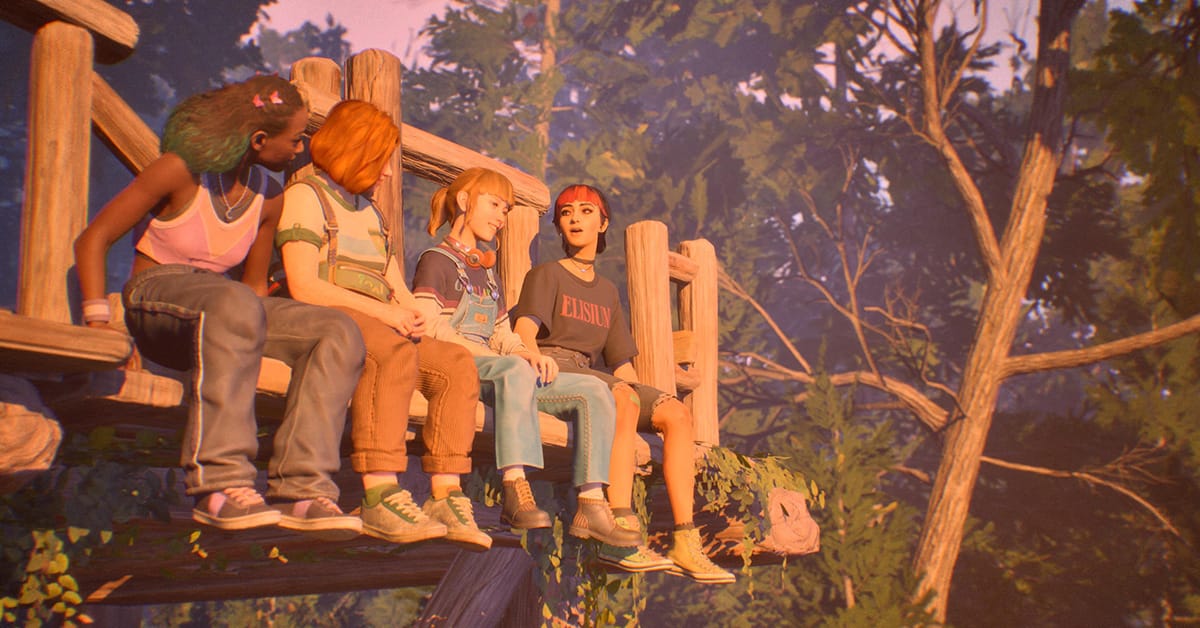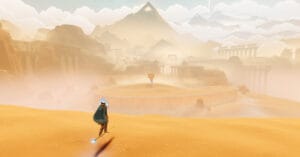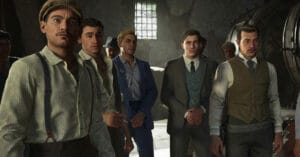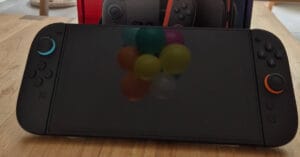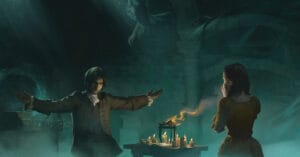Life is Strange remains one of my all-time favorite games, so naturally, I was eager to dive into the new title from developer DON’T NOD. Judging by the trailers, it clearly shares the same DNA. Add a 90s setting to the mix, and this 90s kid (yes, I’m ancient) started Lost Records: Bloom & Rage with high expectations.
This review covers my experience with Tape 1: Bloom, and it’s spoiler-free. If you’d like to read my experience with Tape 2: Rage, you can find that review here.
A Slow Burn Story
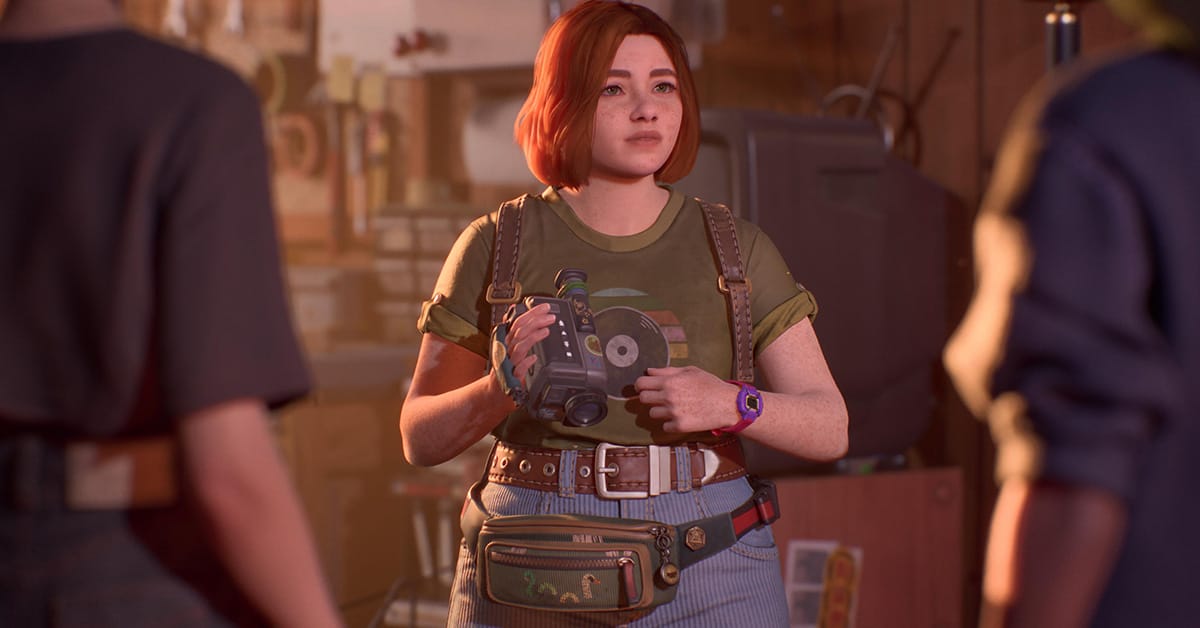
Lost Records: Bloom & Rage switches between two timelines. One takes place in the summer of 1995 in Velvet Cove, where we witness how our protagonist, the outsider Swann, forms a special bond with three new friends. The other unfolds in 2022. After 27 years of no contact, the same friend group is reluctantly reunited in Velvet Cove—a reunion they once swore would never happen.
Multiple questions immediately popped into my mind, with the biggest being: why did these best friends vow never to speak again after that fateful summer in ’95? That’s the central mystery we’ll undoubtedly uncover over the course of both tapes.
It’s important to know that this game takes its time. The story and characters are introduced at a slow pace, allowing us to truly feel how a unique friendship forms. Essential events are carefully and sparingly built up, making their eventual impact hit even harder.
Old Friendships Can Be Both Beautiful and Heartbreaking
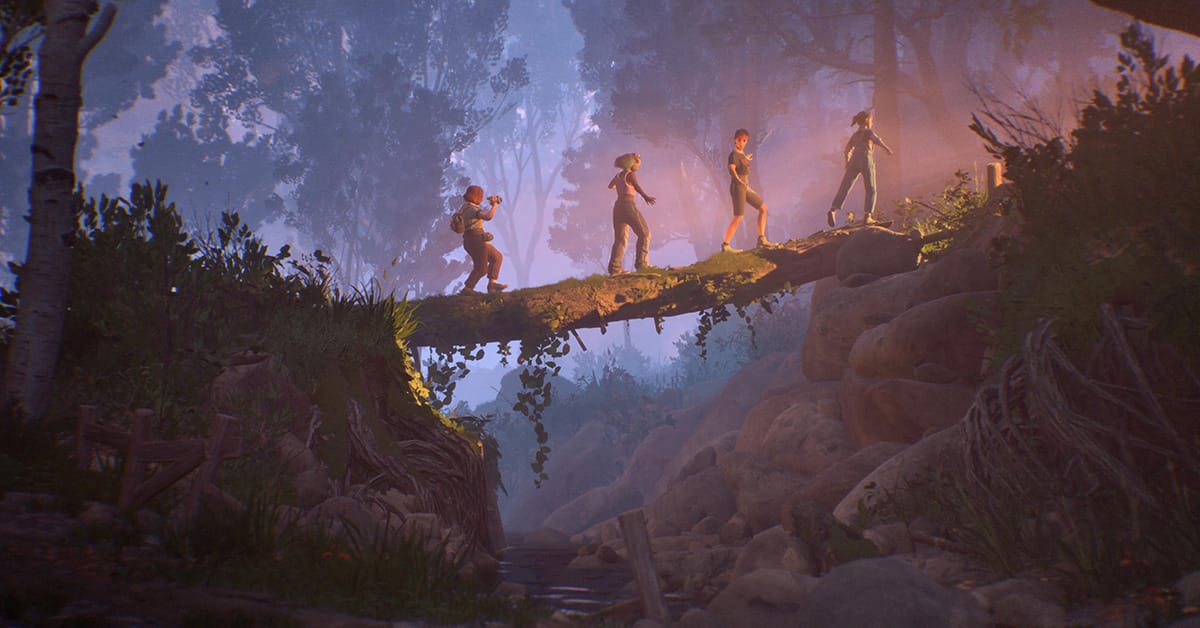
If there’s one thing DON’T NOD excels at, it’s creating authentic friendships and group dynamics. Tape 1 of Lost Records: Bloom & Rage masterfully portrays how vastly different people can connect, drift apart, and how the memories of their bond endure years later. The game reminded me of my own past friendships, but also of how they eventually came to an end.
In my case, those friendships often faded simply because we grew apart (or were too lazy to pick up the phone and schedule a meetup). But in Lost Records, much more dramatic and sinister reasons seem to lie beneath the surface.
“Tape 1 of Lost Records: Bloom & Rage masterfully portrays how vastly different people can connect, drift apart, and how the memories of their bond endure years later. The game reminded me of my own past friendships, but also of how they eventually came to an end.“
When we first meet 16-year-old Swann, it’s immediately clear she’s not a popular girl. She’s socially awkward, has original interests like insects, and is a nerd most senses of the word. At least two of those traits are very recognizable for yours truly, making me develop a soft spot for her. A minor downside was the voice acting by Olivia Lepore, as her portrayal of teenage Swann sometimes felt a bit over the top. Luckily, her adult version is more subdued, and I did appreciate that aspect of her performance.
During an encounter with a typical older bully, Swann is backed up by a group of peers: the sharp-tongued Kat, the level-headed Autumn, and the extroverted Nora. From that moment on, the girls start spending more time together, forming an unbreakable bond. Or so it seems…
The Switching Between ‘95 and ‘22 Kept Reminding Me of That Burning Question
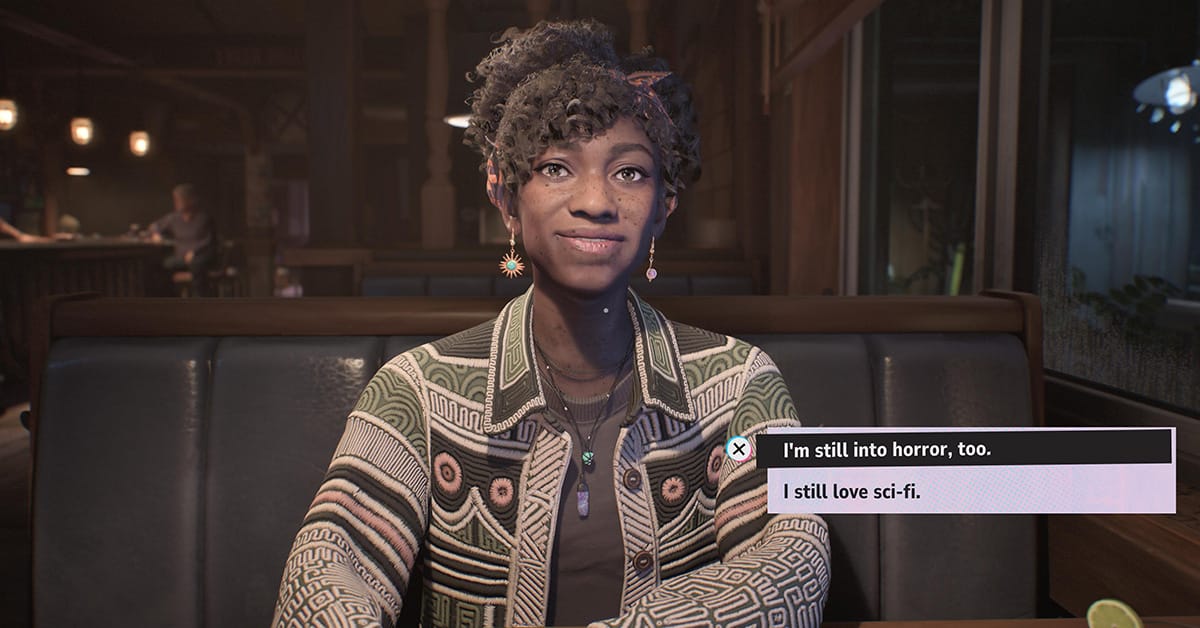
The moments we share as Swann with her three friends are heartwarming to witness. We experience their band rehearsals, forest walks, and marshmallow roasting around a campfire, all while conversations gradually reveal more about their individual lives. Over a short period, we see the group grow closer, and some of the most special moments are set to a beautiful yet melancholic soundtrack.
Each time a touching interaction or a special moment in their friendship occurred, the game would switch back to 2022, where Swann and Autumn reflect on the past. Every time this happened, I was reminded that this friendship had ended so suddenly. The game keeps its cards close to its chest, keeping me guessing about what truly happened that summer. An underlying unease grows as hints of something more ominous begin to surface. With every ‘95 scene, my impatience to find answers to my burning questions grew stronger.
Unsurprisingly, this made it difficult to put the game down. I needed answers—fast. Needless to say, with a playtime of about seven hours, I tore through this first tape.
Trading the Polaroid for a Camcorder
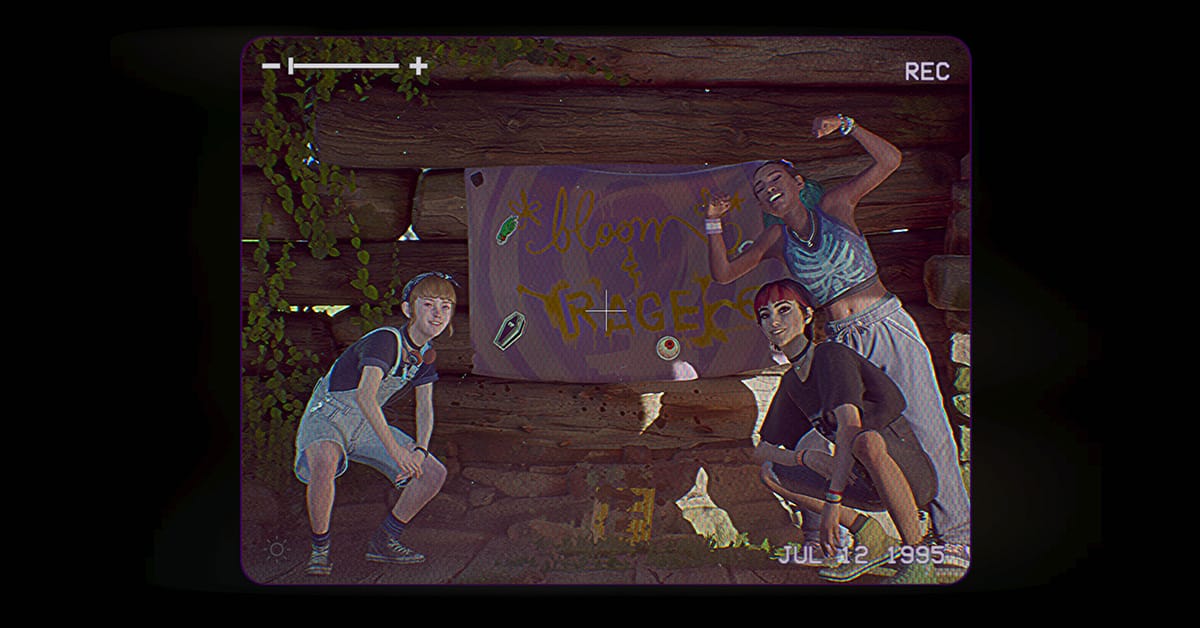
In Lost Records: Bloom & Rage, the developer places a camcorder in the protagonist’s hands instead of the Polaroid camera Max Caulfield was known for. Swann has a passion for filming, and her camera plays a crucial role in the gameplay.
As you walk around in third-person, you can pull out your camera at any time. It’s often necessary for main objectives, like recording your friends or capturing the environment. Outside of these forced objectives, you can also create collections for your ‘Memoires.’ Various objects, people, and animals can be filmed, such as graffiti, birds, or your cat.
Each Memoire entry requires several short clips. Once you’ve recorded enough, you can find a montage in the menu, where Swann provides commentary over your footage. It’s fun to see your own filmmaking skills (or lack thereof) reflected. The grainy, low-quality visuals make it feel authentically like a 90s home video. Though optional for progressing the main story, I found these montages entertaining enough to actively seek out whatever I could film.
“It’s fun to see your own filmmaking skills (or lack thereof) reflected. The grainy, low-quality visuals make it feel authentically like a 90s home video.“
Filming is simple; you press R1 to start recording and focus on whatever fits within a specific memoir. The recording lasts about 10 seconds. You can zoom in and out, walk around, crouch, and move your controller to change the camera’s direction.
You can film as much as you like and later assemble the Mémoires yourself. For example, if you capture a better shot of Autumn, you can swap it with an earlier one. This allows you to adjust the montage, though I didn’t really feel compelled to do so.
One minor drawback: naturally, the world keeps moving while you film. Your friends continue chatting, and sometimes, you’re even expected to respond while recording. This occasionally led to overlapping dialogue, making it feel chaotic and difficult to keep up with everything happening around me.
What’s Better Than Nostalgia and Reflecting on a Time Well Spent?
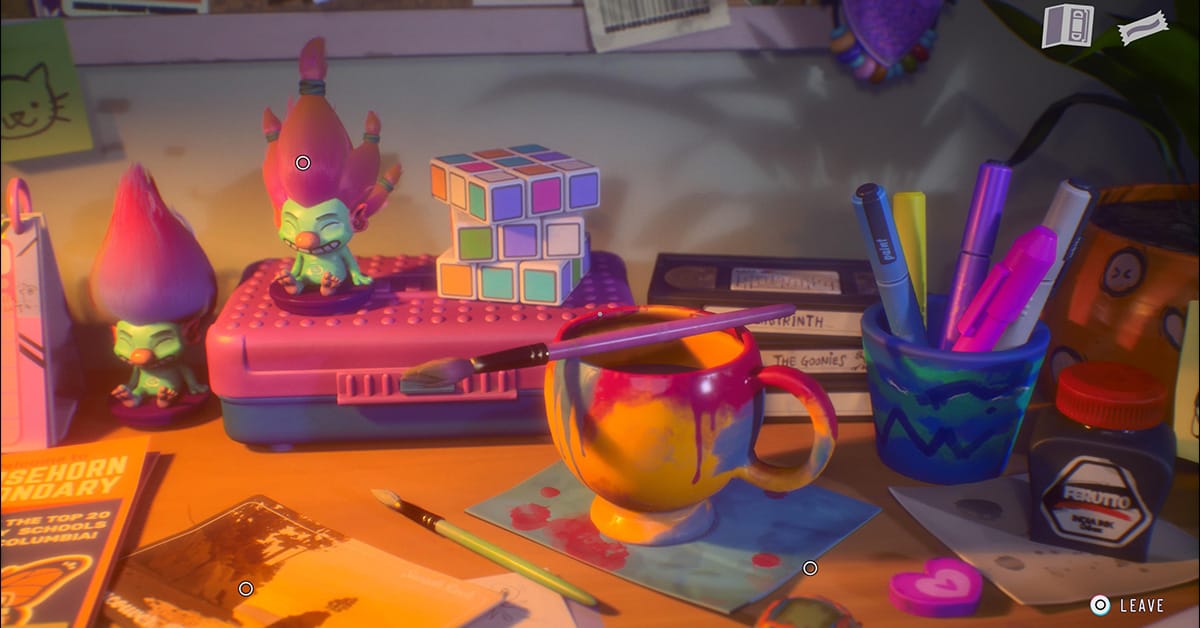
When you’ve had enough of filming, you can also just walk around and explore the beautifully designed environments in other ways. When Swann is near certain objects, you can inspect or interact with them. Some items also have a “reminisce” button, playing a short audio clip from something that happened in ’95. These moments often feature innocent interactions between Swann and her friends, but sometimes they also foreshadow the trouble that awaits the teens.
And reminiscing isn’t just something Swann does. My 90s heart also raced during these inspections, as many of the objects are a real trip down memory lane. In Swann’s bedroom, for example, we find the familiar green trolls and a Tamagotchi (which we can actually use!). VHS tapes, CD-ROM cases, iconic snacks, and films like Pulp Fiction and Dumb and Dumber make sure you never forget you’re in the 90s. And let’s not even get started on the characters’ fashion choices.
You can do the same in 2022, but encountering COVID-19 masks and other precautions didn’t quite give me the same sense of joy as revisiting the 90s.
Inspecting your surroundings also provides more information about certain characters and locations. You might find letters that don’t seem very significant right now, but will undoubtedly make more sense later.
Choices… Choices
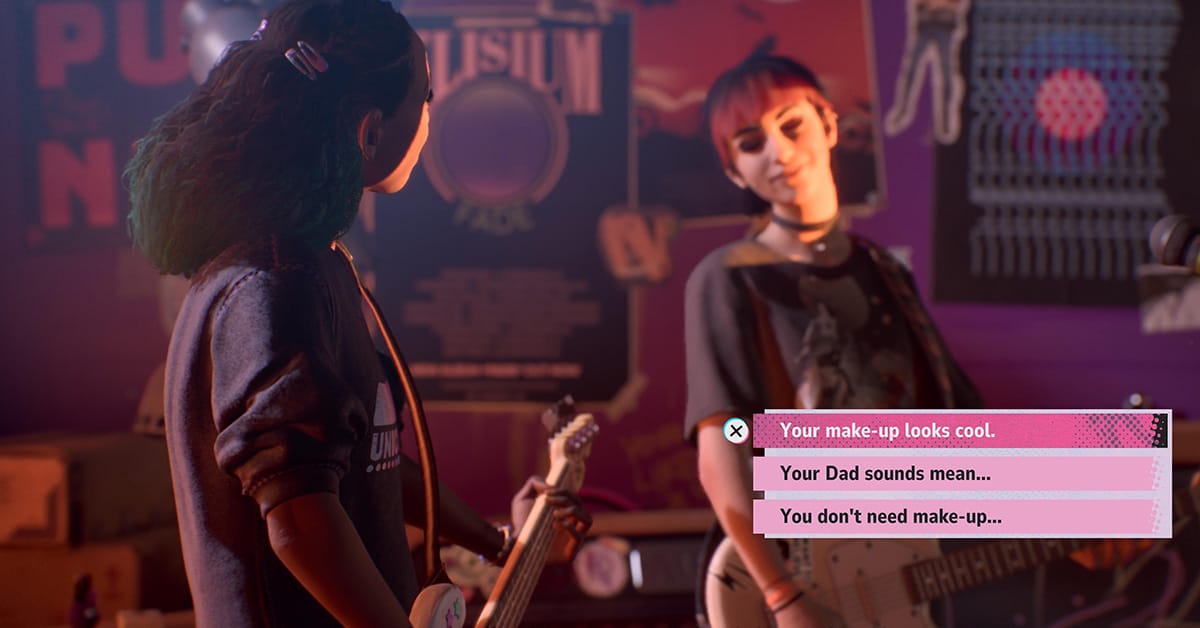
As we’ve come to expect from DON’T NOD, there are plenty of choices to make in both your actions and conversations. Since Tape 2 is still a bit of a wait, it’s unclear just how much impact these choices will actually have. However, from the start, it’s clear that your interactions with your friends form the core of the story.
Almost every time you speak to one of your three friends, a heart or broken heart icon appears, showing how your words affect your relationship with them. At certain points, you can also choose to spend extra time with a specific friend, which has a significant impact on strengthening that bond. Since the group’s shared history is at the heart of the game, their friendship will always remain. You won’t turn into enemies just because you see too many broken heart icons, but you might miss out on something that could’ve been more than just friendship.
All of this adds replay value. I encountered several scenes where I was really curious to see how things would have turned out if I’d chosen a different friend. And since each girl has such a unique personality, the different conversations and interactions are definitely worth exploring.
Additionally, some choices can influence the story or your surroundings. When you make these decisions, another icon appears. In some cases, it doesn’t have much impact. For example, if you decide to bring certain snacks to your friends, you’ll see those snacks appear in a scene later on. But there are also choices that seem to have far-reaching consequences. Only time will tell what these will lead to.
LOOK AT ME
Finally, a small technical detail that caught my attention and occasionally bothered me a little bit: people talking to you without actually looking at you. This was especially noticeable in the 2022 timeline. When I sat at a table with multiple people, it often happened that someone would tell me a story while looking at someone else the whole time. Where are your manners? Hmm? I was once your best friend!
Some Loose Scraps
- Swann looks a lot like Dragon Age: The Veilguard’s Harding, doesn’t she?
- Nora’s character reminded me a lot of Chloe from Life is Strange
- Cool to see teens portrayed with actual acne. I mean…those were the REAL struggles of being a teenager
- When you wait a bit longer, sometimes until the last moment, to pick a dialogue choice, an extra option might appear
- It was nice to see how we lived our lives without phones, being totally unreachable. Sometimes, I miss it
Conclusion
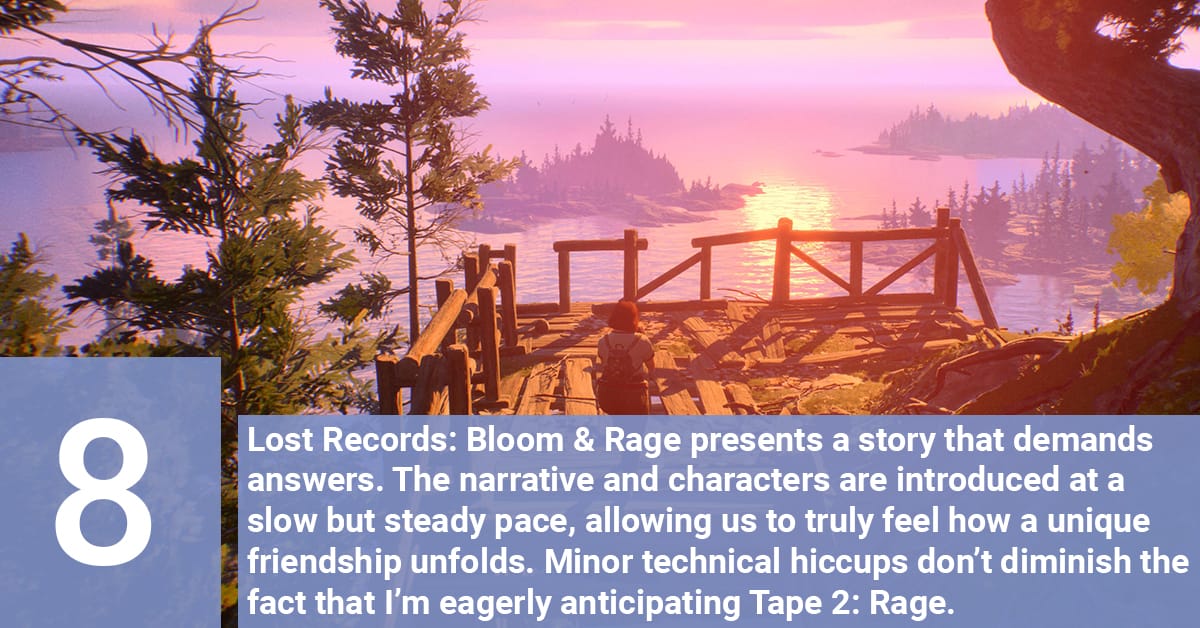
With Lost Records: Bloom & Rage, Don’t Nod presents a story that demands answers. The narrative and characters are introduced at a slow but steady pace, allowing us to truly feel how a unique friendship unfolds. Key events are built up carefully and sparingly, making their eventual impact all the more powerful.
The switch between the 1995 and 2022 timelines is highly effective. The two storylines complement each other, and the interactions in both eras raise pressing questions about what happened in the past.
Minor technical hiccups, including occasional framerate drops during certain cutscenes, and the occasionally overwhelming interface don’t diminish the fact that I’m eagerly anticipating Tape 2: Rage. I can’t wait to get more answers.

